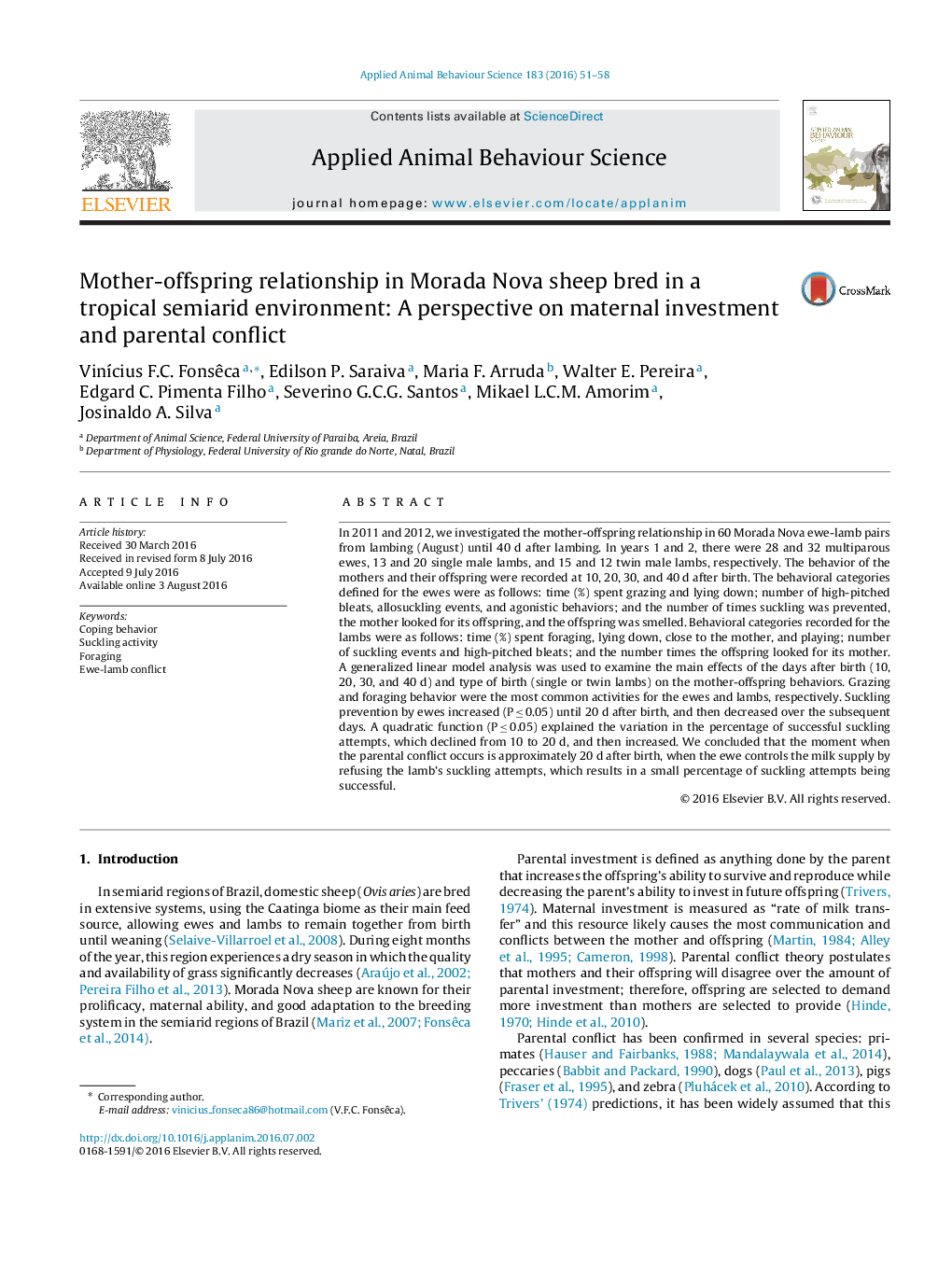| کد مقاله | کد نشریه | سال انتشار | مقاله انگلیسی | نسخه تمام متن |
|---|---|---|---|---|
| 4522352 | 1625323 | 2016 | 8 صفحه PDF | دانلود رایگان |
• We observed similar ewe-lamb behaviors to those reported in previous studies, but a few differences were also observed.
• We demonstrated that foraging is the main behavior for lambs after 10 d of life, and we suggest that this pattern could be linked to coping activity.
• Around 20 d after birth, the ewe refuses the lamb’s suckling attempts, with only a minor percentage of success attempts.
In 2011 and 2012, we investigated the mother-offspring relationship in 60 Morada Nova ewe-lamb pairs from lambing (August) until 40 d after lambing. In years 1 and 2, there were 28 and 32 multiparous ewes, 13 and 20 single male lambs, and 15 and 12 twin male lambs, respectively. The behavior of the mothers and their offspring were recorded at 10, 20, 30, and 40 d after birth. The behavioral categories defined for the ewes were as follows: time (%) spent grazing and lying down; number of high-pitched bleats, allosuckling events, and agonistic behaviors; and the number of times suckling was prevented, the mother looked for its offspring, and the offspring was smelled. Behavioral categories recorded for the lambs were as follows: time (%) spent foraging, lying down, close to the mother, and playing; number of suckling events and high-pitched bleats; and the number times the offspring looked for its mother. A generalized linear model analysis was used to examine the main effects of the days after birth (10, 20, 30, and 40 d) and type of birth (single or twin lambs) on the mother-offspring behaviors. Grazing and foraging behavior were the most common activities for the ewes and lambs, respectively. Suckling prevention by ewes increased (P ≤ 0.05) until 20 d after birth, and then decreased over the subsequent days. A quadratic function (P ≤ 0.05) explained the variation in the percentage of successful suckling attempts, which declined from 10 to 20 d, and then increased. We concluded that the moment when the parental conflict occurs is approximately 20 d after birth, when the ewe controls the milk supply by refusing the lamb’s suckling attempts, which results in a small percentage of suckling attempts being successful.
Journal: Applied Animal Behaviour Science - Volume 183, October 2016, Pages 51–58
